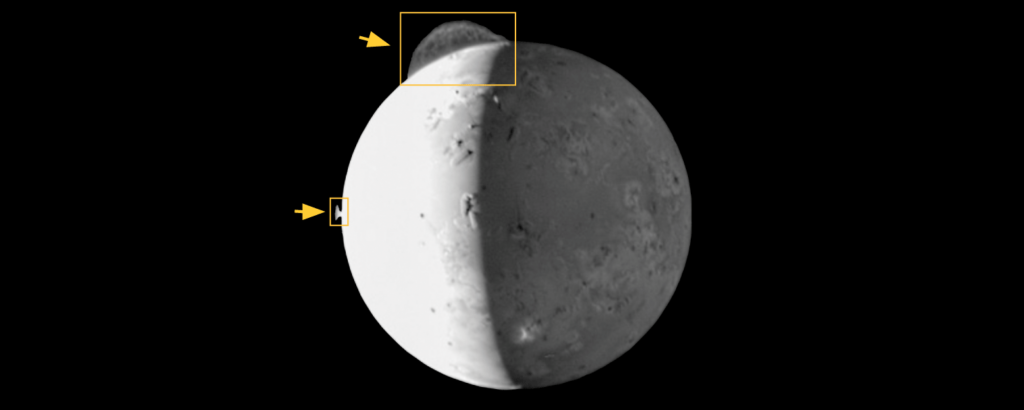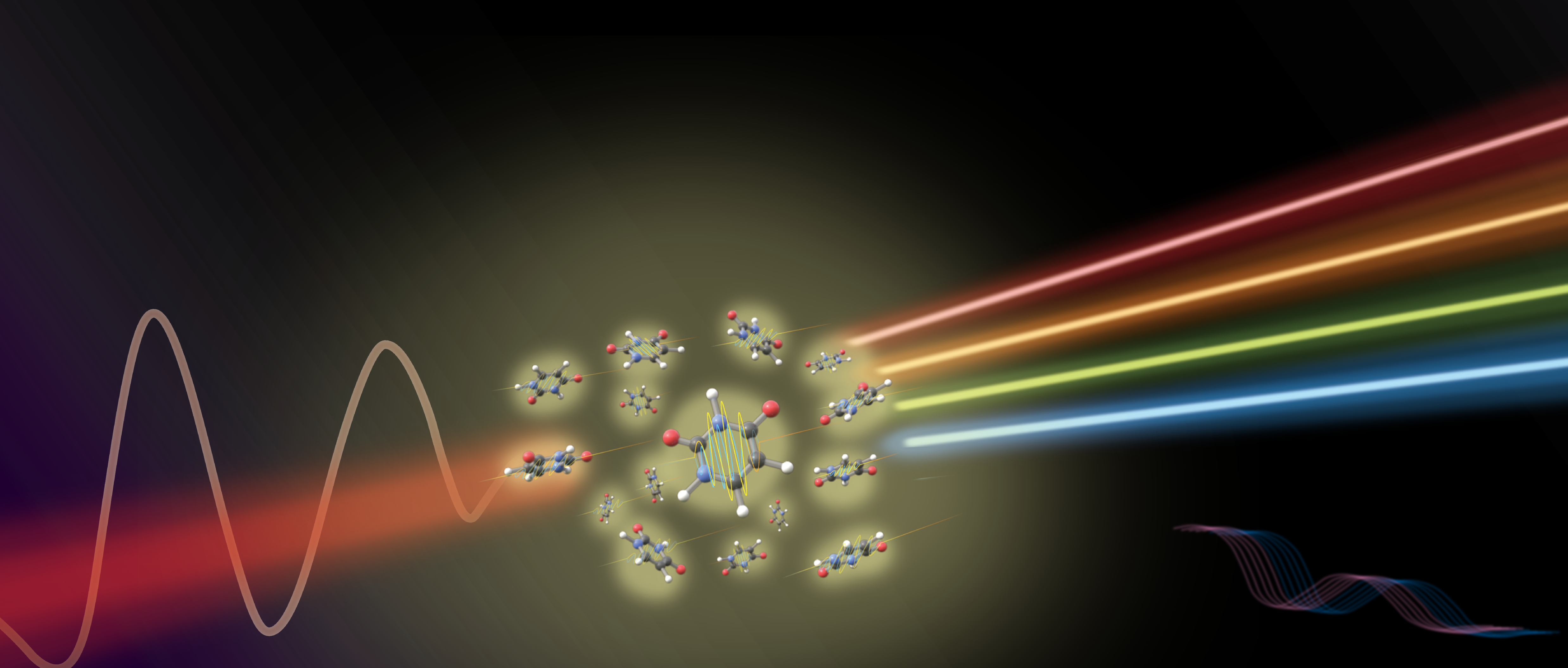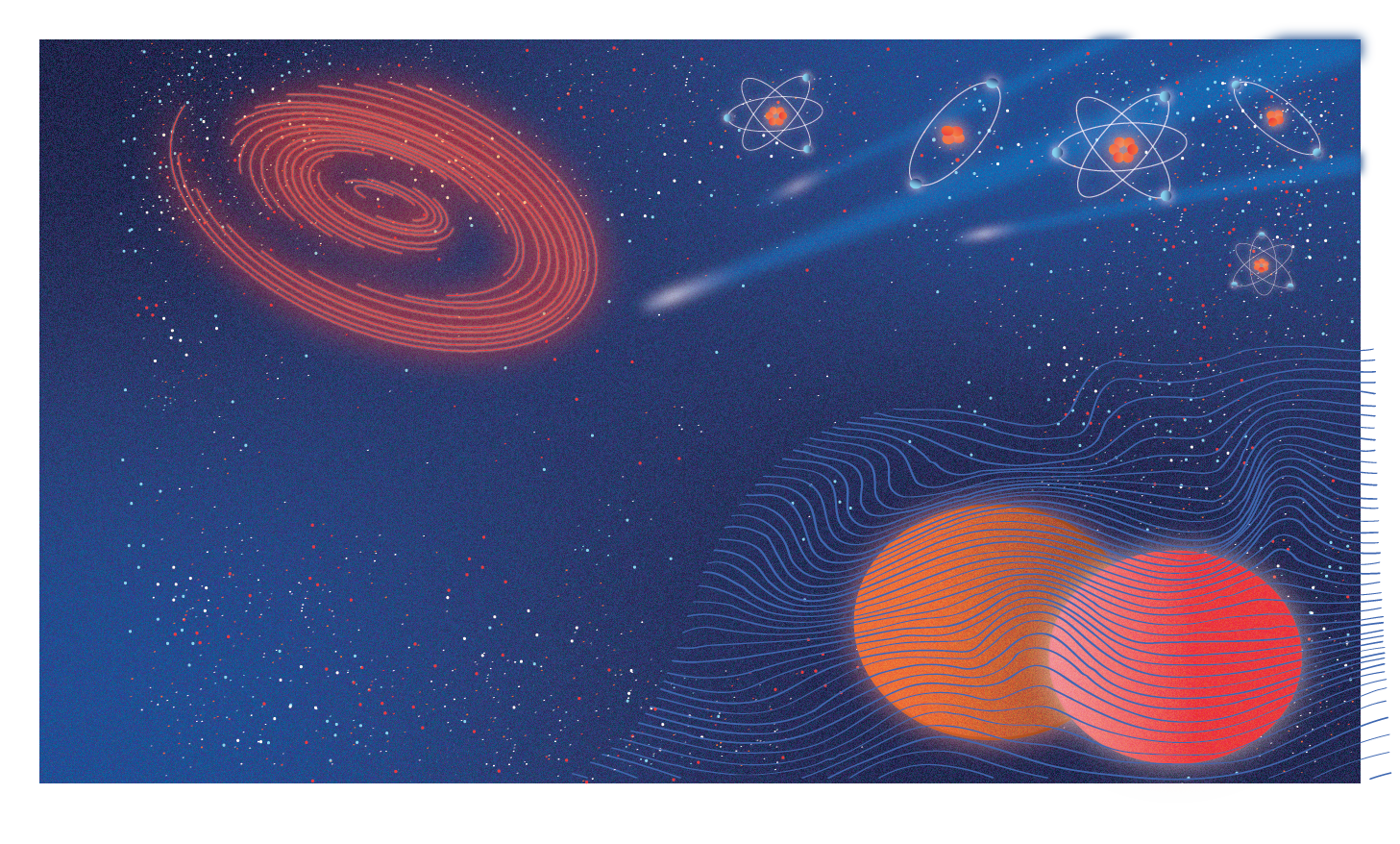
On clear nights, the Moon, though luminous, reflects a dead and unchanging surface—a stagnant image compared to the flickering, distant fire of burning stars. As far as celestial bodies go, moons appear to be pretty dull. But further out in the solar system is a volcanic wasteland of a moon that completely shatters this lunar image. Io, Jupiter’s fourth-largest moon, is by far the most volcanically-active body known in our solar system.
Upon first peering at Io’s dynamic surface through a telescope in Maunakea, Hawaii, UC Berkeley astronomy graduate student Katherine de Kleer recalls being completely “blown away by how distinct the volcanoes appeared and how many I was able to see, all the way from Earth.”
 Io experiences gravitational pull from Jupiter and its other moons. As gravitational pull increases, Io heats up internally—resulting in volcanic eruptions. Design credit: Alexandra Ramsey.
Io experiences gravitational pull from Jupiter and its other moons. As gravitational pull increases, Io heats up internally—resulting in volcanic eruptions. Design credit: Alexandra Ramsey.
Io’s hundreds of active volcanoes have mechanics that resemble those of Earth’s volcanoes at the surface, but they are strikingly alien underneath. The difference is in the volcanic energy supply. Io’s volcanoes are fueled by tidal heating, which is like an extreme version of tides on Earth. Whereas gravity from our Moon tugs on the oceans of Earth to produce high and low tides, Io, sandwiched between Jupiter and the planet’s other large moons, is thought to experience such extreme gravitational tearing and pulling that the friction of its interior grinding against itself kindles the fire for a volcanic monster-moon. But modeling volcanic activity based on our current understanding of Io does not totally explain observed eruptions. Researchers seek high-resolution observations of Io’s volcanic activity to more accurately reveal the magma plumbing underneath Io’s dramatic surface.
On March 8, 2015, de Kleer and a team of astronomers made a critical observation to probe the source of the volcanic activity. In a brief but rich 10 seconds, Jupiter’s moon Europa passed between Io and the team’s binocular telescope down on Earth. It’s counterintuitive to expect a great observation of Io when another moon is in the way, but because Europa does not reflect much of the sun’s infrared light—the bandwidth of light that can reveal the dynamics of heat on Io’s surface—its passage in front of Io allowed researchers to isolate only infrared light coming from Io.
During this event, de Kleer chose to focus her telescope on Io’s most active volcanic site: Loki Patera, an enormous lava lake one million times larger than any lava lake on Earth. de Kleer explains, “During the few seconds it took Europa’s edge to cross Loki Patera, we took images approximately every 120 milliseconds. In each image, Europa covered a slightly different portion of the lake, and the amount that Loki Patera dimmed or brightened between images told us how bright that little piece was that was covered in one frame and not in the other. Using this method, we could reconstruct the brightness distribution within the lake.”
This observation of Io was the first of its kind, and it revealed the lava of Loki Patera like never before. Because the resolution of the heat information was the finest yet—less than 10 km—the team discovered that Loki Patera has two fronts of lava waves traveling from unique points in the lake. The waves are produced by lava at the surface of the lake becoming cold and heavy—and eventually denser than the lighter magma below, resulting in a domino-like overturning of the lake. “The presence of two waves with different wave speeds in the two halves of Loki Patera indicate multiple locations where magma is reaching the surface . . . this tells us that there is a complex system underlying this feature, with distinct but interconnected magma systems feeding the two halves of the patera.”
Europa made conditions perfect for data collection. and de Kleer is eager to set her sights on Io again, but she will have to wait until the next time that Europa passes in front of the volcanic moon in 2021. de Kleer excitedly sums up her experience: “Because this was the first observation of its kind, we weren’t entirely sure that everything was going to work, but we’re obviously thrilled by the result!” This groundbreaking observation provides scientists with more clues about the hidden plumbing of Io and the mysterious cosmic mechanics of tidal heating.
Amanda Tose is a graduate student in neuroscience.
Io picture credit: NASA/Johns Hopkins University Applied Physics Laboratory/Southwest Research Institute. Design credit: Alexandra Ramsey.
This article is part of the Fall 2017 issue.




